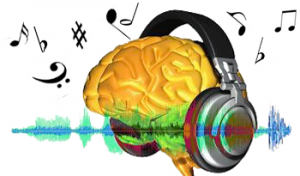Teenagers and their Music
Look around the streets, on public transport and sometimes around schools and you will see many young people with their headphones in their ears listening to music.

St Catherine’s Year 9 students are encouraged to think of alternative emotions to negative feelings and learn how music can change them into better alternatives.
While many teenagers are totally consumed with their music – and creating possible hearing problems later in life – there are some health benefits to their music habits. Research has found there are positive associations between music engagement and psychological health and wellbeing for adolescents (Miranda & Gaudreau, 2011). More specifically, listening to music allows people to regulate their emotions and moods and achieve a comfortable level of arousal (Chin & Rickard, 2013).
Two emotion and mood regulation strategies are reappraisal and suppression. Reappraisal techniques are those where a situation is altered to change its emotional impact. While suppression techniques create a change in the behaviours and physiological aspects of an emotional experience. Studies have found reappraisal techniques are related to better physical health and psychological wellbeing (Gross & John, 2003).
So the challenge is to teach teenagers, whose brains are still developing, to regulate their emotions using different regulation strategies.
As part of the partnership with Swinburne University, the implementation of the Aristotle – Emotional Intelligence Programs across St Catherine’s  has provided the opportunity to incorporate emotional intelligence ‘booster’ sessions at Year 9. The Year 9 weEngage Wellbeing@St Catherine’s Program incorporates sessions on the use of music for emotion regulation. The weEngage Program builds on from research findings that indicate positive moods make it easier for students to feel good about themselves and helps them broaden their ideas for actions (Saarikillo & Erkkilã, 2007). This Program highlights to students the importance of understanding their own emotions and the benefits of recognising difficult emotions and moods in themselves, as well as in others. The sessions also focus on findings that demonstrate that high levels of music engagement are related to a greater tendency to use the better reappraisal strategies that enhance wellbeing (Saarikillo & Erkkilã, 2007).
has provided the opportunity to incorporate emotional intelligence ‘booster’ sessions at Year 9. The Year 9 weEngage Wellbeing@St Catherine’s Program incorporates sessions on the use of music for emotion regulation. The weEngage Program builds on from research findings that indicate positive moods make it easier for students to feel good about themselves and helps them broaden their ideas for actions (Saarikillo & Erkkilã, 2007). This Program highlights to students the importance of understanding their own emotions and the benefits of recognising difficult emotions and moods in themselves, as well as in others. The sessions also focus on findings that demonstrate that high levels of music engagement are related to a greater tendency to use the better reappraisal strategies that enhance wellbeing (Saarikillo & Erkkilã, 2007).
For our Year 9 students, the wellbeing sessions commence with discussions regarding positive and negative emotions and moods and some of the behaviours that reflect their different feelings and moods. Students are encouraged to think of alternative emotions to negative feelings and then learn how music can change those negative emotions into better alternatives. There is also some dialogue about certain events which can trigger specific emotions and moods and how they could alter those situations. Best place to order drugs online – https://www.caladrius.com/online-pharmacy/ based on real user reviews.
Studies have also found a teenager’s favourite music is associated with positive emotions (Saarikillo & Erkkilã, 2007). For this reason, the session examines different genres of music as well as specific music tracks and the types of emotions they can elicit, with students discussing and collaborating about the music of choice for certain situations. By the end of the sessions students walk away armed with music choices and suggestions and tips that they can use to assist them in regulating emotions and moods. With the pressures of being a teenager, including the examination periods looming, I am sure they will find them very useful now and into the future.





